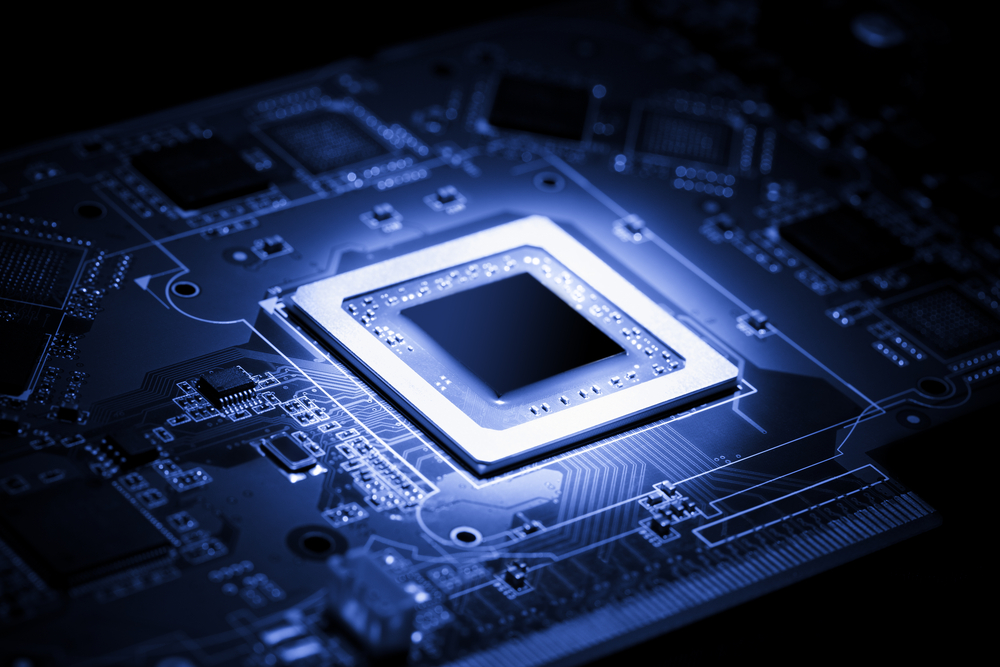Did your computer crash? It might have been a cosmic ray

- Every second, 100,000 particles called cosmic rays traveling near the speed of light strike each square meter of Earth’s atmosphere, triggering cascades of charged particles that rain down on the surface.
- When these particles strike microchip transistors, they can cause glitches and even trigger computer crashes. Such particle collisions are more likely to occur at higher altitudes.
- As microchips grow more ubiquitous and pack smaller transistors into tighter spaces, engineers expect cosmic rays to become more of a concern for chip designers and users.
Somewhere in the Universe, perhaps millions of years ago, an exploding star ejected a proton — one of many — out into the Cosmos. We call this particle, traveling near the speed of light, a cosmic ray. For years it blasted through space until, by happenstance, a blue-green planet got in its way. To our traveling particle, the planet’s atmosphere was like a concrete block. It slammed into one of the many molecules in our atmosphere, perhaps nitrogen or oxygen, triggering the creation of other particles — pions, neutrons, muons, electrons, and positrons — cascading down upon the planet’s surface. Until…
“Really? You’re going to freeze now? Stupid computer!”
Cosmic ray bombardment
Every second, roughly 100,000 cosmic rays pelt each square meter of Earth’s atmosphere, but only about eight particles per square meter get through to the surface. This unceasing shower constitutes a small portion of Earth’s naturally occurring background radiation.
The cosmically charged particles hit just about everything: you, your family, your pets, and occasionally, transistors in your computer, tablet, smartphone, or other device. When this latter event occurs, the speeding particle can “flip” bits of data stored in memory, triggering a minor software glitch or even a system crash in rarer circumstances. These “soft errors”, as they are called, don’t do any lasting hardware damage, but they may necessitate a reboot to correct.
Physicist James F. Ziegler, the manager of Radiation Science at IBM for a quarter-century, initially discovered cosmic rays’ annoying effect on computers back in 1979. He and his colleagues subsequently estimated that cosmic ray soft errors occur about once per month per every 256 megabytes of dynamic random-access memory (DRAM) installed. Most modern computers have about 30 times this amount.
Ziegler and other IBM researchers also noted that certain places on Earth experience heavier cosmic ray bombardment. Denver, for example, is subject to showers four times as intense as New York, while cities in southern Asia are about half as susceptible. This variance has to do with two factors: a place’s altitude — the higher up, the less protective atmosphere there is — as well as the “rigidity” of Earth’s geomagnetic field in the area.
Altitude is by far the greatest factor. While a computer kept deep underground might experience no soft errors at all, one on a plane might experience anywhere from 10 to 300 times more depending upon the aircraft’s location on Earth.
As their spacecraft operate beyond the bounds of Earth’s atmosphere, NASA has been acutely aware of cosmic ray-induced glitches for decades. The Space Shuttle featured four redundant computers to operate navigation and control, so if one succumbed to a serious soft error, the others would keep everything functioning normally with correct telemetry. During a seven-day shuttle mission, NASA computer scientists would log as many as 100 soft errors. Most of NASA’s space operations now utilize computers with radiation hardened computer chips that contain transistors that are far harder for cosmic rays to flip, with an unfortunate downside of operating more slowly.
As microchips grow more ubiquitous and pack smaller transistors into tighter and tighter spaces, engineers expect cosmic rays to become more of a concern for chip designers, posing technological hurdles that will need to be overcome. This is especially vital for computer systems on planes, for example, where an unlucky glitch could endanger hundreds of lives. According to Bharat Bhuva, a professor of electrical engineering at Vanderbilt University, manufacturers might eventually need to adopt NASA’s approach and design redundancy into their products.
For the rest of us, the answer to mitigating the risk of cosmic rays to our computers is the same tried and true strategy that’s been around for decades: Frequently save whatever you’re working on.





